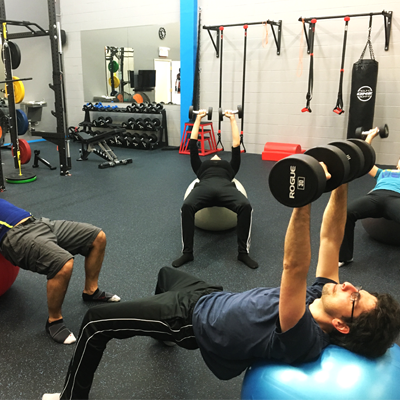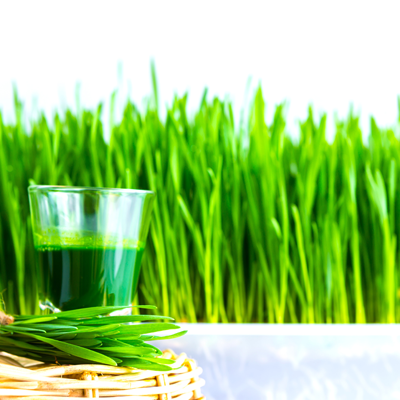
Amid all the confusion surrounding Covid-19, what everybody does seem to understand, without a doubt, is that older people are most vulnerable. It’s a scary world once you hit 60. Novel viruses can breakout at any moment and you are, by default, part of the high risk demographic. And worse, from the constant dialogue presented by the media and health authorities, we are led to believe that this increased vulnerability is inevitable. But is this true?
In this article I will present a different and more empowering perspective that, unfortunately, isn’t often emphasized by the many leaders and experts that are appearing in the media these days. From politicians to physicians, virologists to infectious disease specialists, one of the key elements that defines our current crisis seems too taboo for any of them to even mention. In fact, it could even land them in trouble- especially in the court of public opinion. Well, here it is anyway: Your vulnerability is far from being inevitable and, when it comes to the immune system, scientists have indeed discovered the fountain of youth.
The term immunosenescence refers to the gradual deterioration of the immune system that occurs with age and weakens your ability to fight infections. These changes may also be the primary reason why older people are more prone to developing cancer.1 Thus, understanding how to halt and reverse the decline of an aging immune system can prove not only effective for preventing infectious disease outbreaks, such as Covid-19, but also for greatly reducing the incidence of age-related cancers. But is it possible to prevent and reverse immunosenescence? The short answer is yes! Decades of scientific research has provided clear evidence that we can hold back the hands of time.
Behind your sternum and between your lungs lies your very important thymus gland. This thumb sized and irregular shaped organ is essential for controlling and coordinating your immune system. Your thymus is where T-cells mature and, when a virus attacks, these T-cells are deployed to find and kill infected cells. In fact, what makes the HIV virus so dangerous is that it infects and reduces T-cells, thus putting the patient at risk from opportunistic infections and cancers that a stronger immune system would otherwise be able to destroy. Simply put, T-cells are the soldiers of your immune system that defend you against enemy invaders. If their numbers are reduced, or they become exhausted, you become more vulnerable. A problem with aging is that by the time you reach 65 your thymus gland has atrophied and is no longer able to produce new T-cells, and by your 75th birthday this once important organ is reduced to little more than fatty tissue. There are no more troops coming to rescue you.
The question we must ask is how to prevent this seemingly cruel feature of aging in order to maintain a strong immune system. The first answer is exercise, and the scientific evidence is very encouraging. One study looked at 125 older long-distance cyclists and determined that even those in their 8th decade of life were producing the same amount of T-cells as adults in their 20s.2 The researchers concluded that it is not aging alone but physical inactivity associated with aging that profoundly accelerates immunosenescence, and increases the risk of infections in older adults. It is encouraging to learn that even people as old as 80 can have a similarly robust immune system as their grandchildren- just as long as they maintain an active lifestyle. And it is never too late to begin to exercise. It’s been shown that even post-menopausal women, aged 65-85, can significantly improve their immunity and become less vulnerable to viruses with just 10 weeks of resistance training.3
In addition to having our thymus shrink and our healthy T-cells decrease, another feature of aging is the increase of dysfunctional or “senescent” T-cells that roam the body driving up chronic inflammation- known as "inflamm-aging”- and raising the incidence and severity of infections. Research has shown that regular exercise prevents the accumulation of these harmful cells, and in turn may reduce morbidity and mortality from infectious disease and cancer .4,5 Once again, it doesn’t take long to see the positive effects of exercise. Just 6 weeks of strength training can reduce the amount of dysfunctional T-cells in older women who are suffering from a chronic viral infection.6 This serves as another reminder that, while it is ideal to exercise throughout our lifetime, it is also never too late to start. Your immune system CAN improve regardless of your age or pre-existing condition.
Ageism In Health Care
Lack of proper exercise is a major cause of chronic disease and increased vulnerability with age, so it should only make sense for the medical community to endorse exercise as often and consistently as possible. Unfortunately, this is not always the case. Older patients are often provided general “play it safe” advice and restrictions that encourage fear, anxiety and depression, all of which are associated with bad outcomes, including higher hospital readmission rates and death.7 The only thing that improves with fear are the sales of prescription medications.
With close to 20 years of experience as a personal trainer, I have successfully used a different approach with my older clients. I respect their abilities and see their unique potential as individuals, just as I would do with any athlete- regardless of age. As a consequence I get to witness the reversal of the aging process, and a light restored in individuals who feel empowered to take back control of their lives. My client Hymie is a perfect example. At 77 years old, after two major heart surgeries, most people would just give up. Hymie does this instead…
In summary, exercise is indeed a very powerful therapy for preventing immunoscenescence by improving the quantity and function of our soldier T-cells, while helping to reduce the dysfunctional cells of our immune system that age us prematurely. Epidemiologic studies have clearly shown that regular physical activity is strongly associated with decreased mortality and incidence rates for viral infections.8,9,10 However, exercise alone is not enough. A poor diet contributes greatly to the decline of our immune system and our vulnerability to infectious diseases. In fact, the preponderance of the scientific evidence shows that the quality of our diet is the single most important predictor of disease and mortality. I will cover nutrition in Part 2 of this article. Until then, I leave you with a message that has been largely ignored by many health experts covering the Covid-19 crisis: your body comes naturally equipped with an amazing ability to protect and heal itself, and improving this ability is within your control. It all begins with a choice of how you wish to live your life.
Marc Jaoudé
Naturopath, Health Educator
Nutrition & Exercise Specialist
Immunosenescence: Research Update For Covid-19
I was very honoured to receive a message today from Dr. Palmer who has published several research papers on ageing, immunology and cancer. His work represents an important paradigm shift in our understanding of age-related diseases. Dr. Palmer thanked me for citing his paper in my article on immunosenescence, and directed my attention to his latest research where he and his colleagues utilize Covid-19 hospitalization data to show a simple inverse relationship between risk of serious disease and thymus size. The thymus gland atrophies with age which in turn decreases the amount of T-cells that help you fight infections. Once again, the secret to beating this disease may lie in strengthening our immune system as opposed to allowing it to age prematurely.
Here are some of Dr Palmer’s research papers that support a shift in how we may soon view and treat cancer and other age-related diseases, such as Covid-19.
https://www.pnas.org/content/115/8/1883
https://www.medrxiv.org/content/10.1101/2020.08.25.20181487v1.full.pdf
Follow us on Facebook for evidence-based updates and tips on how to protect yourself from Covid-19. And for more information on how to boost your health through food and exercise, we invite you to visit our website and learn about our services today.
References
-
Palmer, S., Albergante, L., Blackburn, C. C., & Newman, T. J. (2018). Thymic involution and rising disease incidence with age. Proceedings of the National Academy of Sciences, 115(8), 1883–1888. doi: 10.1073/pnas.1714478115
-
Duggal, N. A., Pollock, R. D., Lazarus, N. R., Harridge, S., & Lord, J. M. (2018). Major features of immunesenescence, including reduced thymic output, are ameliorated by high levels of physical activity in adulthood. Aging Cell, 17(2). doi: 10.1111/acel.12750
-
Mcfarlin, B. K., Flynn, M. G., Phillips, M. D., Stewart, L. K., & Timmerman, K. L. (2005). Chronic Resistance Exercise Training Improves Natural Killer Cell Activity in Older Women. The Journals of Gerontology Series A: Biological Sciences and Medical Sciences, 60(10), 1315–1318. doi: 10.1093/gerona/60.10.1315
-
Teixeira, A. M. (2018). Effects of lifelong training on T lymphocytes senescence. Annals of Research in Sport and Physical Activity, (ex2018), 73–76. doi: 10.14195/2182-7087_ex2018_15
-
Turner, J. E., & Brum, P. C. (2017). Does Regular Exercise Counter T Cell Immunosenescence Reducing the Risk of Developing Cancer and Promoting Successful Treatment of Malignancies? Oxidative Medicine and Cellular Longevity, 2017, 1–18. doi: 10.1155/2017/4234765
-
Dinh, H. C., Bautmans, I., Beyer, I., Onyema, O. O., Liberman, K., Dobbeleer, L. D., … Njemini, R. (2019). Six weeks of strength endurance training decreases circulating senescence-prone T-lymphocytes in cytomegalovirus seropositive but not seronegative older women. Immunity & Ageing, 16(1). doi: 10.1186/s12979-019-0157-8
-
Jaoudé, M. (2018, November 2). When Doctor Prescribed Exercise Restrictions Lead to More Complications. Retrieved from https://markitonutrition.com/when-doctor-prescribed-exercise-restrictions-lead-to-more-complications/
-
Williams, P. T. (2014). Dose–Response Relationship between Exercise and Respiratory Disease Mortality. Medicine & Science in Sports & Exercise, 46(4), 711–717. doi: 10.1249/mss.0000000000000142
-
Wong, C.-M., Lai, H.-K., Ou, C.-Q., Ho, S.-Y., Chan, K.-P., Thach, T.-Q., … Peiris, J. S. M. (2008). Is Exercise Protective Against Influenza-Associated Mortality? PLoS ONE, 3(5). doi: 10.1371/journal.pone.0002108
-
Wu, S., Ma, C., Yang, Z., Yang, P., Chu, Y., Zhang, H., … Wang, Q. (2016). Hygiene Behaviors Associated with Influenza-Like Illness among Adults in Beijing, China: A Large, Population-Based Survey. Plos One, 11(2). doi: 10.1371/journal.pone.0148448







Hi,
Thanks for citing my paper!
You might also be interested in another paper called “Risk of COVID-19 hospitalisation increases exponentially with age, inversely proportional to T-cell production”
Thank you very much Dr. Palmer, I’m honoured. Your work represents an important paradigm shift in our understanding of cancer and other age-related diseases. I look forward to reading and sharing your latest paper.
Thank you for the initiative to write this awesome article, a good reminder and explanations of the benefits of physical activity.
Thank you very much Mark.
Love your in-depth common sense articles Marc! I’ll keep on working out with this in mind now 👍🌈
Thank you Sandra. I’m glad it provided a little extra drive to what I am sure are already great workouts!
I LIKE this article! It gives me much hope! Thank you!
My pleasure Liz. I’m glad it had a positive effect, and I hope the message reaches more people. Thank you.
Very encouraging article. Exercise is very good for everyone. Thank you!
Absolutely, exercise is key to good health and longevity. Thank you very much M.B.